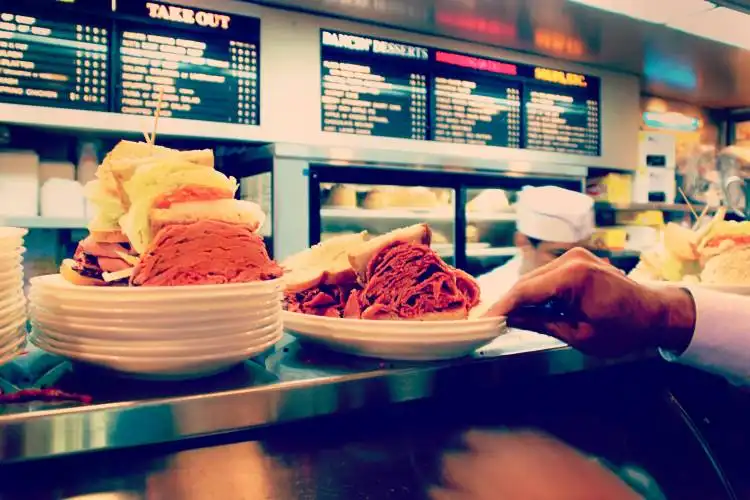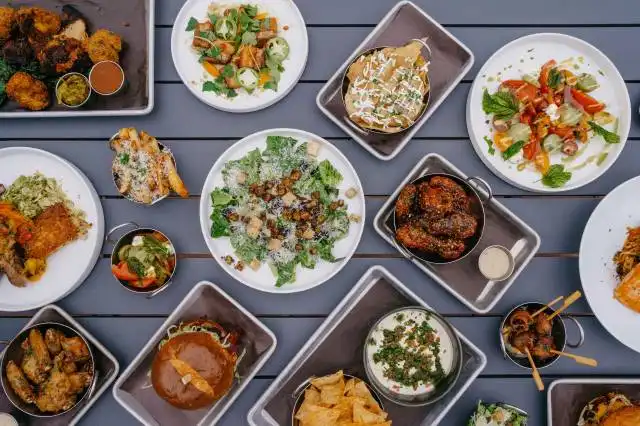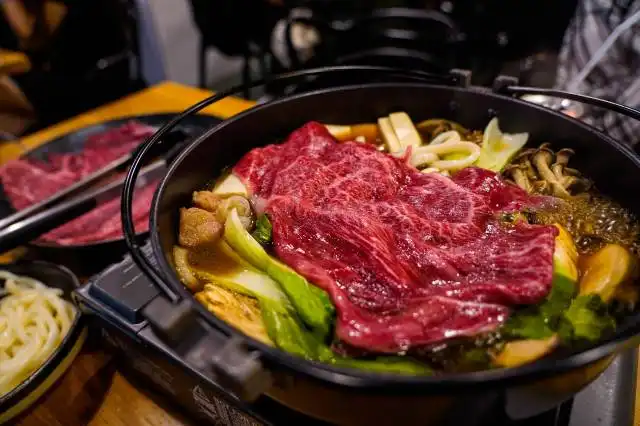Start a Buffet Restaurant
Culinary Orchestra: Orchestrating a Symphony of Delights with Your Own Buffet Restaurant
| Updated


BUFFET RESTAURANT
Ever pondered owning a culinary sanctuary that compiles diverse delicacies under one roof? Consider opening your very own buffet restaurant! This venture invites your guests to indulge in an epicurean exploration, journeying through a spread of dishes from appetizers to desserts, all for a single admission price. Not just a restaurant, a buffet business model is a symphony of culinary delights that gives patrons the freedom of choice and allows them to control the portion size, creating a satisfying, personalized dining experience.
Jump to Business Plan
RELATED BUSINESS IDEAS
Browse ALL Food & Beverage Entrepreneurship Business Ideas
Discover Your Perfect Domain
Unlock the door to your online success with our hand-picked selection of premium domain names. Whether you're starting a new venture or rebranding an existing one, the right domain can set the tone for your digital presence. Browse through our curated list, each with its unique potential to enhance your brand's visibility and credibility.
BUFFET RESTAURANT MINI BUSINESS PLAN
This a quick reality check to help you identify the strengths and weaknesses of your business concept before you dive in.
Expected Percent Margins:
- Gross Margin: 60-70%
- Net Profit Margin: 5-10%
Earnings Expectations:
- Daily Earnings: $1,200 - $3,000
- Weekly Earnings: $8,400 - $21,000
- Monthly Earnings: $36,000 - $90,000
- Annual Earnings: $432,000 - $1,080,000
Actions to Achieve Those Numbers:
Food Cost and Quality Control:
- Initial Investment: At least $50,000-$100,000 for kitchen equipment and inventory.
- Supplier Network: Create solid relationships with local and regional suppliers for fresh ingredients.
Branding and Marketing:
- Online Presence: Develop a website and use social media platforms for updates and promotions.
- Local PR: Attend community events, host food festivals, and offer discounts to local businesses to build local rapport.
Staffing and Customer Service:
- Experienced Chef: Hiring an experienced chef to maintain food quality and design unique dishes will give an edge over competitors.
- Wait Staff: Employ 4-6 wait staff for a smooth and efficient operation.
Rentals and Utilities:
- Location: Prime location can increase footfalls but also comes with higher rent. Rent should be less than 10% of expected monthly sales.
- Utility Bills: Monthly utility bills (including gas, electricity, water) should be budgeted around $800 - $1,200 per month.
Business Operations:
- Open Hours: Ideally, the buffet should be open for both lunch and dinner all 7 days a week.
- Customer Volume: To generate the expected sales, you would need to serve approximately 100 customers per day with an average receipt of $20-$30 per customer.
Remember, these numbers are estimations which can change based on regional differences, competition, economic conditions, and business setup. A business consultant or financial advisor can provide a more personalized business plan.
NOT WHAT YOU HAD IN MIND? Here are more ideas



Browse ALL Food & Beverage Entrepreneurship Business Ideas
Grab Your Business Website Name
Before you get caught up in the whirlwind of setting up your business, invest in a domain name. It's a small but significant step that lays the foundation for your brand and makes it easier for customers to find and trust you. Just like you wouldn't build a house without securing the land first, don't build a business without securing your domain name.
"Why? Can't that wait?" Here's why it shouldn't
Step 1: Determine if the Business is the Right Endeavor
Breakdown of Startup Expenses
When starting a buffet restaurant, it is important to consider the startup expenses that will be required. This includes the cost of the building, equipment, furniture, supplies, and any other necessary items. Additionally, it is important to consider the cost of hiring staff, obtaining licenses and permits, and any other fees that may be associated with the business. It is important to be aware of all the costs associated with starting a business so that you can make an informed decision about whether or not it is the right endeavor for you.
Breakdown of Ongoing Expenses
In addition to the startup expenses, it is important to consider the ongoing expenses associated with running a buffet restaurant. This includes the cost of food, labor, utilities, and any other necessary items. Additionally, it is important to consider the cost of marketing, advertising, and any other fees that may be associated with the business. It is important to be aware of all the costs associated with running a business so that you can make an informed decision about whether or not it is the right endeavor for you.
Examples of Ways to Make Money
When running a buffet restaurant, there are a variety of ways to make money. This includes charging customers for the food they eat, offering catering services, and selling merchandise. Additionally, you may be able to generate revenue by hosting special events, such as birthday parties or corporate events. It is important to consider all of the potential ways to make money so that you can make an informed decision about whether or not it is the right endeavor for you.
Step 2: Name the Business
When naming a business, it is important to consider the type of business you are starting. For example, if you are starting a buffet restaurant, you may want to choose a name that reflects the type of food you will be serving. Additionally, you may want to choose a name that is memorable and easy to pronounce. It is also important to consider the potential for trademark issues. You should research the name you choose to make sure it is not already in use by another business. You should also consider registering the name with the appropriate government agency to protect it from being used by another business.
Another important consideration when naming a business is the potential for marketing. You should choose a name that is catchy and that will help to draw customers in. Additionally, you may want to consider how the name will look on signage, business cards, and other marketing materials.
Finally, you should consider the potential for growth when naming your business. You may want to choose a name that is not too specific to the type of business you are starting so that you can expand into other areas in the future.
Step 3: Obtain Necessary Licenses and Permits
Before a buffet restaurant can open its doors, the business must obtain the necessary licenses and permits. Depending on the state, county, or city, the types of licenses and permits needed may vary. Generally, a business will need a business license, a food service license, a liquor license, a health permit, and a zoning permit. A business license will allow the business to legally operate in the area. A food service license will allow the business to serve food to customers. A liquor license will allow the business to serve alcohol to customers. A health permit will allow the business to serve food and alcohol to customers in a safe and sanitary manner. Finally, a zoning permit will allow the business to operate in a certain area.
How to Obtain Licenses and Permits
In order to obtain the necessary licenses and permits, the business must contact the local government. The local government will provide the business with the necessary forms and applications. The business must fill out the forms and applications and submit them to the local government. The local government will then review the forms and applications and determine if the business is eligible for the licenses and permits. If the business is eligible, the local government will issue the licenses and permits.
Cost of Licenses and Permits
The cost of the licenses and permits will vary depending on the state, county, or city. Generally, the cost of the licenses and permits will range from several hundred to several thousand dollars. The business should contact the local government to get an estimate of the cost of the licenses and permits.
Time Frame
The time frame for obtaining the licenses and permits will also vary depending on the state, county, or city. Generally, the process will take several weeks to several months. The business should contact the local government to get an estimate of the time frame for obtaining the licenses and permits.
Step 4: Secure Financing
Securing financing is an important step in starting a buffet restaurant. There are several sources of financing available, such as personal savings, loans from family and friends, bank loans, and venture capital. It is important to research each option and determine which one is the best fit for the business.
Budgeting
Creating a budget is essential for any business. When budgeting for a buffet restaurant, it is important to include startup costs, such as equipment, supplies, and rent, as well as ongoing expenses, such as payroll, utilities, and food costs. It is also important to factor in any additional costs, such as advertising and marketing.
Business Plan
Creating a business plan is an important step in securing financing. A business plan should include an executive summary, a description of the business, a market analysis, a competitive analysis, a description of the management team, and financial projections. It is important to make sure the business plan is thorough and professional.
Loan Application
Once the business plan is complete, the next step is to apply for a loan. It is important to research different lenders and compare interest rates and repayment terms. It is also important to make sure the loan application is complete and accurate.
Finalizing Financing
Once the loan is approved, the next step is to finalize the financing. This includes signing the loan agreement and making sure all the paperwork is in order. It is important to make sure all the terms of the loan are understood and agreed upon before signing.
Step 5: Find a Suitable Location
When choosing a location for a buffet restaurant, there are several factors to consider. First, the location should be easily accessible to potential customers. It should be in an area that is highly visible and easy to find. Additionally, the location should have enough space to accommodate the necessary equipment and seating for customers. The size of the space should also be large enough to accommodate the number of customers that the restaurant hopes to serve. It is important to consider the cost of the space, as well as any additional costs associated with the location, such as utilities and taxes.
Leasing vs. Buying
When deciding on a location for the buffet restaurant, it is important to consider whether to lease or buy the space. Leasing a space can be a more cost-effective option, as it does not require a large upfront investment. However, it may be more difficult to negotiate a long-term lease with the landlord. Buying a space can be more expensive, but it provides more control and flexibility over the space. It is important to consider the pros and cons of both options and make the best decision for the business.
Securing the Location
Once a suitable location has been found, it is important to secure the space. This may involve signing a lease or purchase agreement, as well as paying any associated fees. It is important to read and understand all of the terms of the agreement before signing. Additionally, it is important to research any local zoning laws or regulations that may affect the business. This will help ensure that the business is in compliance with all applicable laws and regulations.
Step 6: Design the Restaurant
Layout of the Restaurant
When designing the layout of the restaurant, it is important to consider the flow of customers, the ease of access to the buffet, and the overall ambiance of the restaurant. The layout should be designed to maximize the number of customers that can be served at once, while still allowing for a comfortable and enjoyable experience. Consider the size of the restaurant, the number of tables and chairs, and the placement of the buffet. It is also important to consider the placement of the kitchen, the bathrooms, and the storage areas.
Décor of the Restaurant
The décor of the restaurant is also important to consider when designing the restaurant. The décor should be inviting and comfortable, while still being modern and stylish. Consider the colors, the lighting, and the artwork that will be used to create the desired atmosphere. Additionally, consider the types of furniture that will be used, such as chairs, tables, and booths. The décor should also reflect the type of cuisine that will be served. For example, if the restaurant is serving Italian food, the décor should be inspired by Italian culture. Finally, consider the placement of the décor in the restaurant, such as the placement of the artwork and the placement of the furniture.
Step 7: Hire Employees
When hiring employees for a buffet restaurant, it is important to consider the type of customer service that you want to provide. You should look for employees who are friendly, outgoing, and have a good understanding of customer service. You should also look for employees who have experience in the food service industry. Additionally, it is important to consider the skills and qualifications that you require for each position. For example, if you are hiring a chef, you should look for someone who has experience in the kitchen and is familiar with the type of cuisine that you are serving.
Training Employees
Once you have hired your employees, it is important to provide them with the necessary training. This should include training on food safety, customer service, and any other policies or procedures that you have in place. Additionally, it is important to provide training on the specific dishes that you will be serving. This will ensure that your employees are well-prepared to serve your customers.
Employee Benefits
In addition to providing your employees with the necessary training, it is important to consider offering them benefits. This could include health insurance, vacation time, and other benefits that may be available. Offering benefits to your employees can help to attract and retain quality employees. Additionally, it can help to create a positive work environment and improve morale.
Employee Scheduling
Finally, it is important to create an employee scheduling system. This should include scheduling shifts, assigning tasks, and ensuring that all employees are properly trained. Additionally, it is important to consider the needs of your employees when creating the schedule. This could include providing flexible hours and allowing employees to take time off when needed.
Step 8: Create a Menu
When creating a menu for a buffet restaurant, it is important to consider the types of food that will be offered. It is best to offer a variety of food items that appeal to a wide range of customers. Consider offering a mix of hot and cold dishes, as well as vegetarian and vegan options. Additionally, it is important to consider the cost of ingredients when creating a menu. It is important to create a menu that is both appealing and cost-effective.
Pricing
When pricing the dishes on the menu, it is important to consider the cost of ingredients and overhead costs associated with running the business. Additionally, research the competition to determine what prices are being offered in the area. It is important to not price the dishes too high, as this could lead to customers choosing to go elsewhere. It is also important to not price the dishes too low, as this could lead to a loss of profits.
Specials
In order to draw in customers, consider offering specials on certain days of the week. This could include discounts on certain dishes or offering a free dessert with the purchase of a meal. Additionally, consider offering a loyalty program to customers who visit the restaurant frequently. This could include offering a free dish after a certain number of visits or a discount on the customer’s next meal.
Promotion
Once the menu has been created and priced, it is important to promote the restaurant. Consider creating a website and social media accounts to advertise the restaurant. Additionally, consider creating flyers and distributing them in the local area. It is also important to consider word-of-mouth advertising, as this can be a powerful tool for drawing in customers.
Step 9: Promote the Business
Promoting the business is an important step in the process of starting a buffet restaurant. There are many ways to promote the business, including developing a website, creating a social media presence, and using traditional marketing methods such as flyers and billboards. Developing a website is a great way to reach potential customers and provide them with information about the restaurant. Creating a social media presence is also a great way to reach potential customers and keep them informed about specials and events. Traditional marketing methods such as flyers and billboards can also be effective in reaching potential customers in the local area. Additionally, word-of-mouth referrals can be a great way to get the word out about the restaurant.
Tips for Promoting the Business
When promoting the business, it is important to keep the target audience in mind. Developing a website and creating a social media presence should be tailored to the target audience. For example, if the target audience is young adults, then the website and social media presence should be designed to appeal to that demographic. Additionally, when using traditional marketing methods such as flyers and billboards, it is important to choose the right locations to maximize visibility. Word-of-mouth referrals can be encouraged by providing incentives such as discounts or free meals to customers who refer others to the restaurant. Finally, it is important to track the effectiveness of each promotional method to determine which ones are most successful.
EXPLORE MORE CATEGORIES
Browse ALL Business Idea Categories
TAKE THE NEXT STEPS










